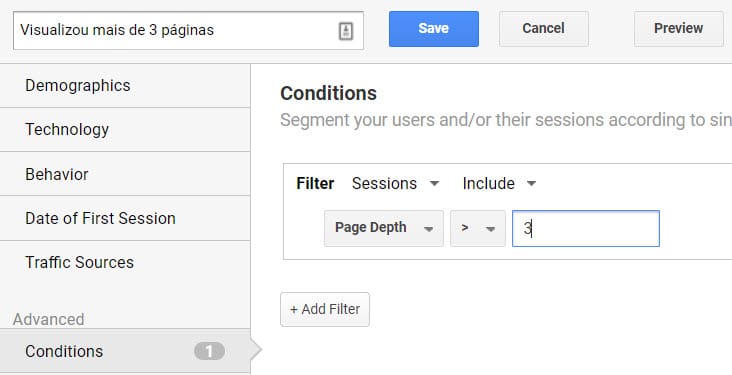Browsing through the “behavior” section of Google Analytics you will find the metric “pageviews” as the main metric in most reports. Many businesses still consider this the main metric to watch for on their websites. But is this true? What is a page view in Google Analytics? Let’s see!
Index
What are pageviews in Google Analytics?
Google Analytics has a very useful feature that explains what a particular metric or dimension is when you hover your mouse over the question mark icon. According to Google Analytics, the definition of pageviews is:

Pageviews is the total number of pages viewed. Repeated views of a single page are counted.
According to Google’s Google Analytics support site, a page view is:
An instance of a page being loaded (or reloaded) by a browser. Page Display is a metric defined as the total number of pages displayed.
Now suppose you have a page on your site about your main product: page views will show the number of times this page is viewed in a given period. The “pageviews” metric itself says nothing about how many visitors viewed the page or how many times the page was viewed per session. It is just the total number of views per page. This means that one visitor can account for many views, and that a page can be viewed several times per session.
Combining pageviews with other metrics
The volume of pageviews can provide an indication of how popular a page is. However, having a high number of page views does not always necessarily mean that the page is popular. Is it good that you get a lot of page views per visit? Does this mean that people like to read many pages on your site? Or does it mean that they cannot find what they are looking for? A good data analyst always critiques his data. A single metric doesn’t tell you much; it’s the context that provides the information you can use.
You may wonder, “Why don’t I see“sessions,” “pageviews,” and “users” in a single table in Google Analytics?” There is a reason why Google Analytics does not allow you to see pageviews in combination with sessions and users by default. This has to do with the way Google Analytics collects its data. Google Analytics data is organized on a scope basis. In GA the information is organized under four scopes:
- Hit
- Session
- User
- Product
If you are interested in understanding scope in Google Analytics, I wrote an article about dimensions and metrics in GA that explains why you can’t combine metrics from different scopes. In short: never combine hit and session metrics. So if you create a custom report that shows page views and sessions per page, you will get a report that doesn’t make sense. Because sessions have hits, but hits don’t have sessions.
Read also: Digital Marketing Metrics: which ones are important?
Adding context to page views
So if you can’t combine user and session metrics to hit metrics, what can you do to add more context to the hit metric?
Unique Page Views
You can see the number of unique page views compared to page views. According to the definition in Google Analytics:
Unique page views is the number of sessions during which the specified page was viewed at least once. A single page view is counted for each combination of URL and page title.
Explaining. Let’s say a visitor visits a page about on-page SEO, then visits the home page, and then visits the page about on-page SEO again. During this session, the on-page SEO page is displayed twice. These two pageviews in this single session will be added to the total number of pageviews on that page. However, only a single pageview will be added to the total number of unique pageviews for that page during a single session.
If you want to see the number of sessions on a page, the best way is to examine the metric of unique page views. And if you divide the number of page views by the number of unique page views, you get the average number of times a specific page was viewed per session. It is a good idea to check the pages for which the number of page views differs greatly from the number of unique page views. This means that visitors viewed this page a few times during a single session. This may indicate that the page is confusing people, or that it may be a help page (for example) where visitors have to visit a few times to perform some procedure on the site.
Also read: What are users in Google Analytics?
Creating Segments
You can also see the number of page views per visit and create a user segment. This allows you to compare groups of users and see where they differ. For example, visits with more than three pageviews compared to visits with less than three pageviews.

Are these two groups coming from different traffic sources? Do they read different articles? Do they buy things or not? Comparing groups will help you better understand your audience.
Conclusion
No new or extraordinary tips in this article. This is a review of basic concepts that many professionals, agencies, and companies often overlook.
In general, pageviews are not the most interesting metric for you to use in your analysis. And if you consider it one of the most important metrics in your reporting, reconsider because there are much more valuable metrics out there. What do you want to know? Are page views the way to get this information? Probably not.
Continue reading: Nomenclature in Google Analytics and Tag Manager
